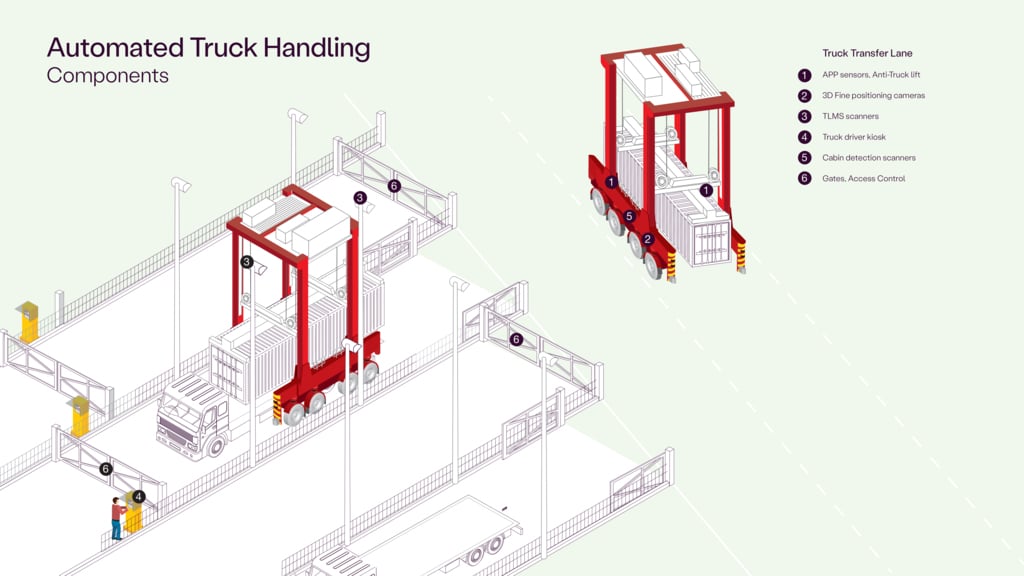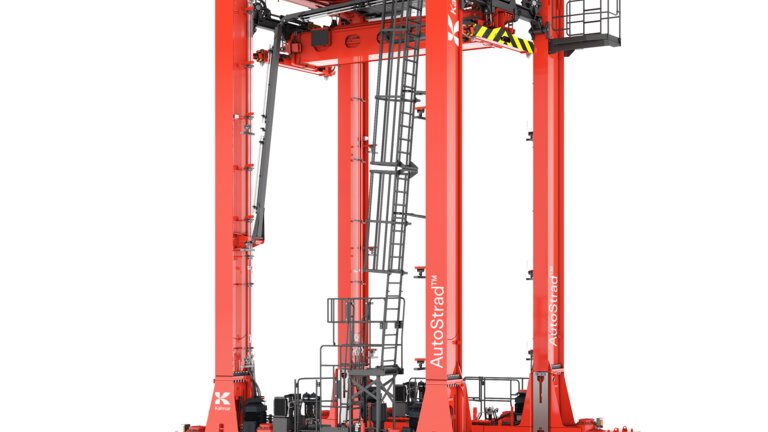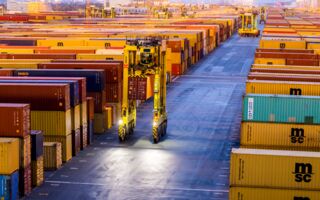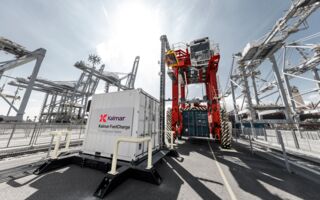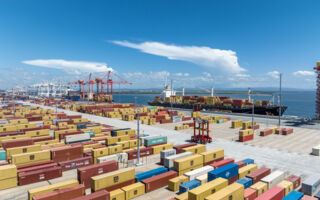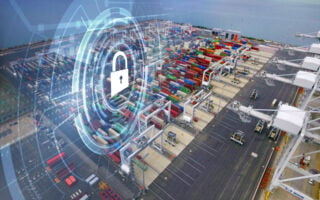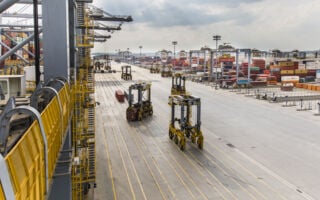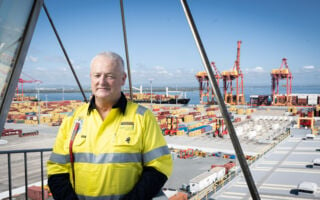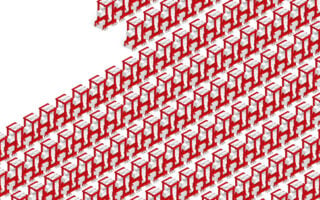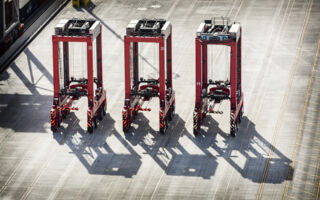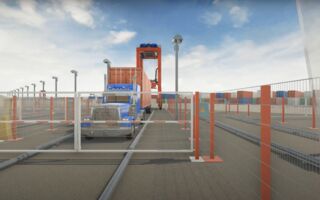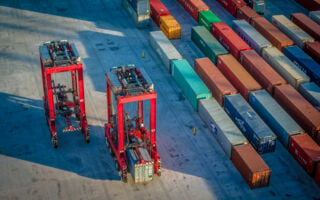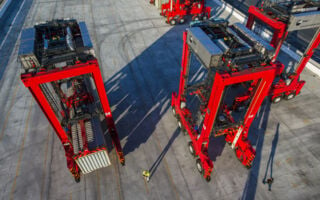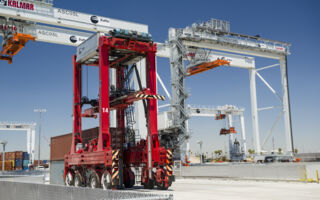Choose your level of automation with Kalmar AutoStrad™, providing the flexibility to automate container handling operations at your own pace.
The Kalmar AutoStrad™ application, powered by Kalmar One Automation System allows you to automate your container handling operations at your own pace, giving you the freedom to choose the level of automation that is right for your business. Our entire range of Straddle Carriers can be factory fitted or retrofitted to be automation ready.
Automated truck handling: The last link in terminal automation
DOWNLOADS
Technical information
| Technical info | AutoStrad specifications |
|---|---|
|
Stacking height (9'6)
|
3 or 4 containers |
|
Engine
|
Diesel/Diesel-Electric/Hybrid |
|
Hoist system:
|
Smooth lift (Classic model), Electric winch rope (Electric and Hybrid models) |
Reap the rewards of automation.
The Kalmar AutoStrad™ application allows you to automate your day-to-day operations. You will benefit from improved predictability, operational efficiency, and higher levels of safety.
A Kalmar AutoStrad™ gives you:
- The choice of automating your operations at your own pace
- A range of highly efficient power units to choose from
- A reliable and safe machine to operate
- Improved predictability
- Easier and safer to maintain
- A solution that can pick and place independently from other container handling equipment
- The ultimate flexibility as you can decouple your operations between your quayside and landside operations.
No matter where you choose to start your automation journey, Kalmar is there to help. We can support you every step of the way to ensure that you achieve your automation goals.
Kalmar AutoStrad™ is ideal for businesses that want to start to automate their operations with one piece of equipment that can be used in different situations. They are suitable for terminal and intermodal operations and can be used to move containers between your warehouses or depot to and from your main yard.
The Kalmar AutoStrad™ application powered by Kalmar One
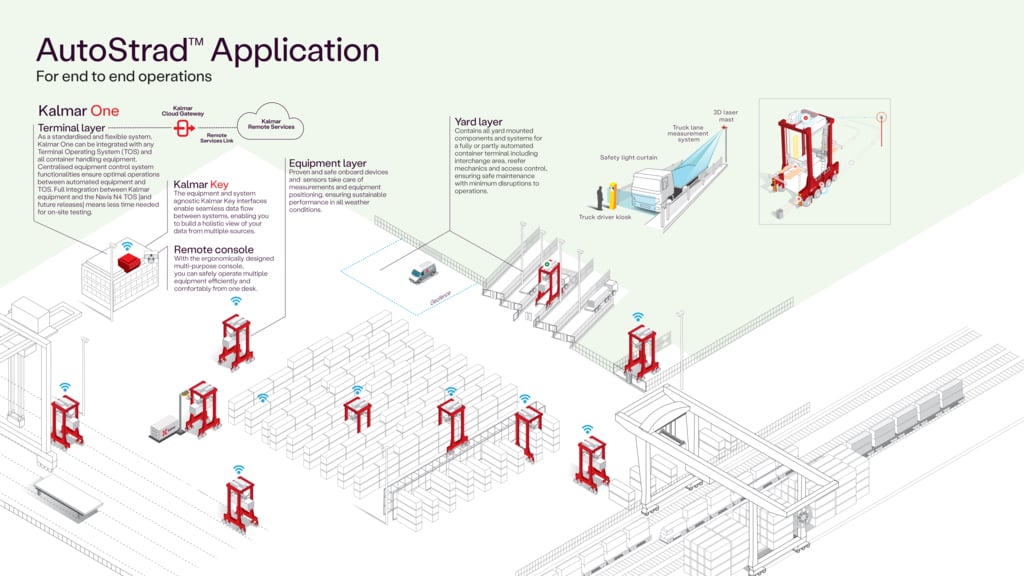
Key features:
- Powered by Kalmar One Automation System
- Kalmar Key provides integration flexibility
- Ability to be integrated with various Terminal Operating Systems
- Proven functionalities and established processes
- Various levels of automation available
- Automation available across the Kalmar Straddle Carrier range
- Ability to retrofit existing Straddle Carriers
- Connectivity provided via a wireless connection
- Support for terminals of all sizes with stepwise automation approach
- Gradual deployment support in brownfield terminals.
Keeping everyone extra safe.
By using geo-fencing, Kalmar AutoStrad™ can operate with other equipment, and be serviced safely by creating virtual safe fenced zones. Traditional fencing is still required to separate your automated yard from other parts of your operations if you are operating a Kalmar AutoStrad™.
Fully automated container flow with ATH
With the automated truck handling (ATH) feature, you can take the level of automation one step further. ATH enables a a fully automated container flow between quay cranes and trucks by automating the last stage of the landside operations – the final placement of containers onto road trucks. The feature has earlier been already available for Kalmar yard cranes and has been recently added to Kalmar’s horizontal transportation offering.
ATH automates the placement of containers from automated straddle carriers onto trucks in the terminal’s truck interchange zones. A Truck Lane Measurement System (TLMS) is used to measure the truck’s profile, location and the container positions available, while a camera imaging system is used for fine positioning when placing the container onto the truck. ATH improves the safety, predictability and cost-efficiency of terminal operations by eliminating the need for personnel to be present in the truck interchange zones.
